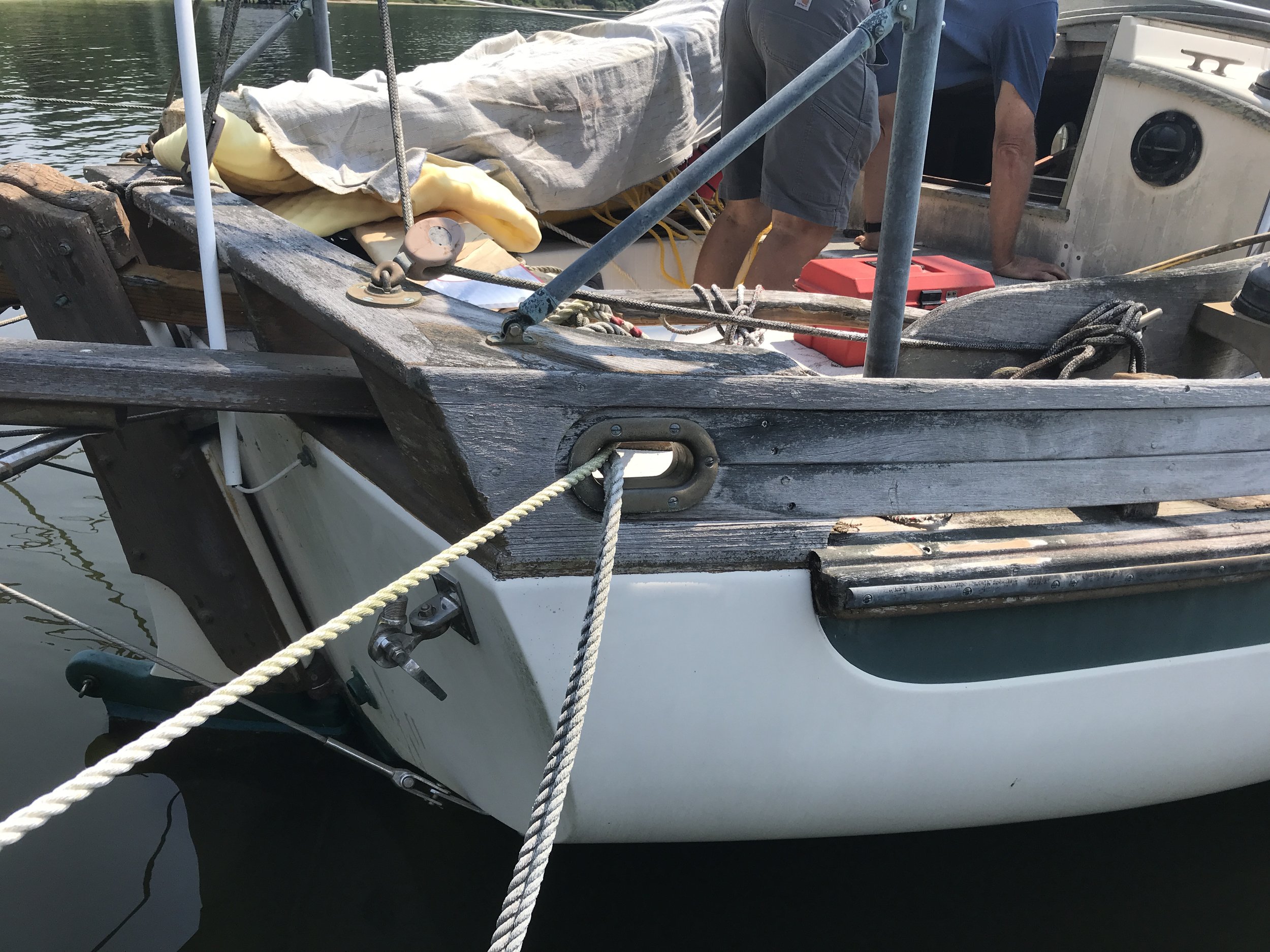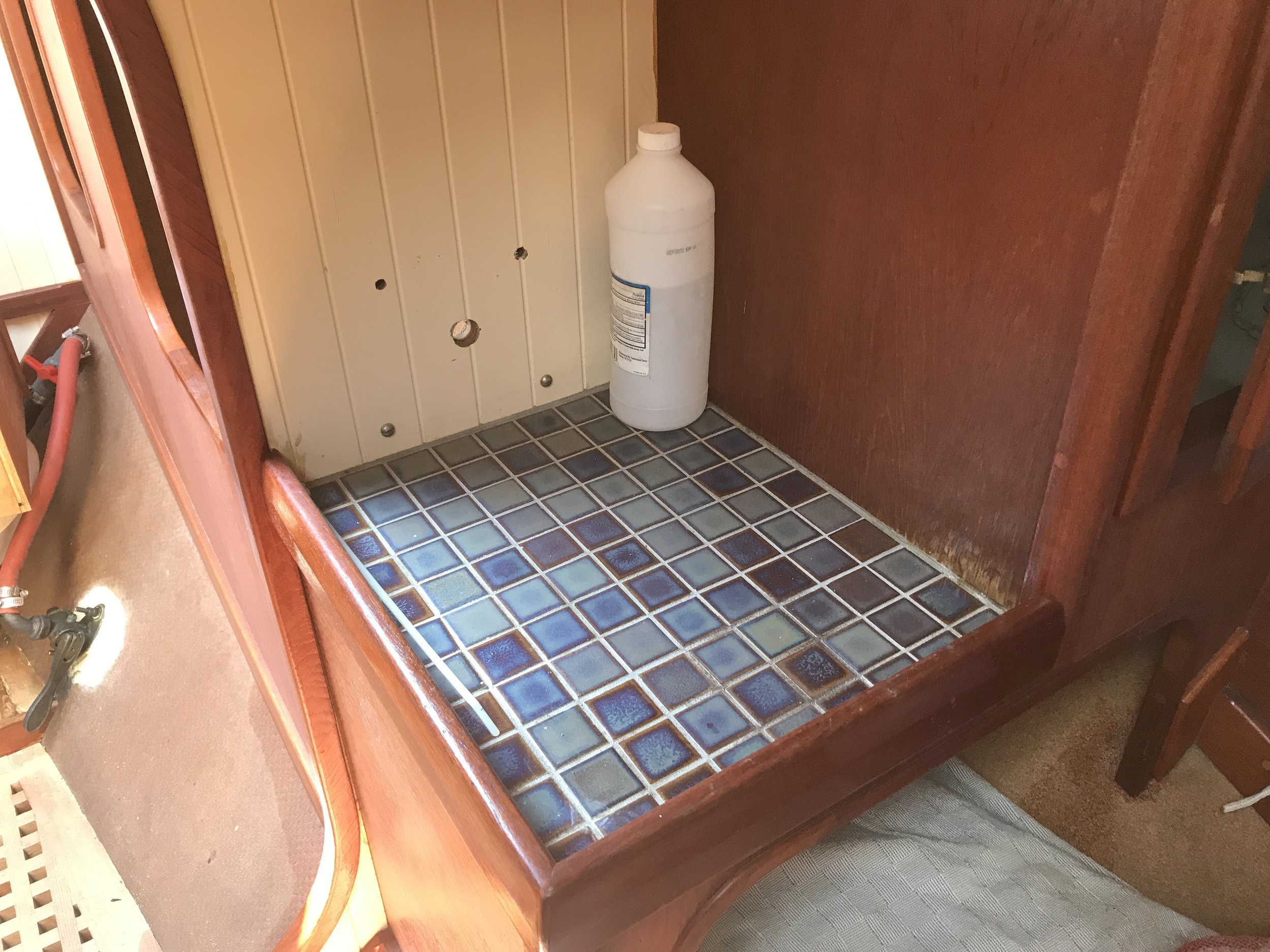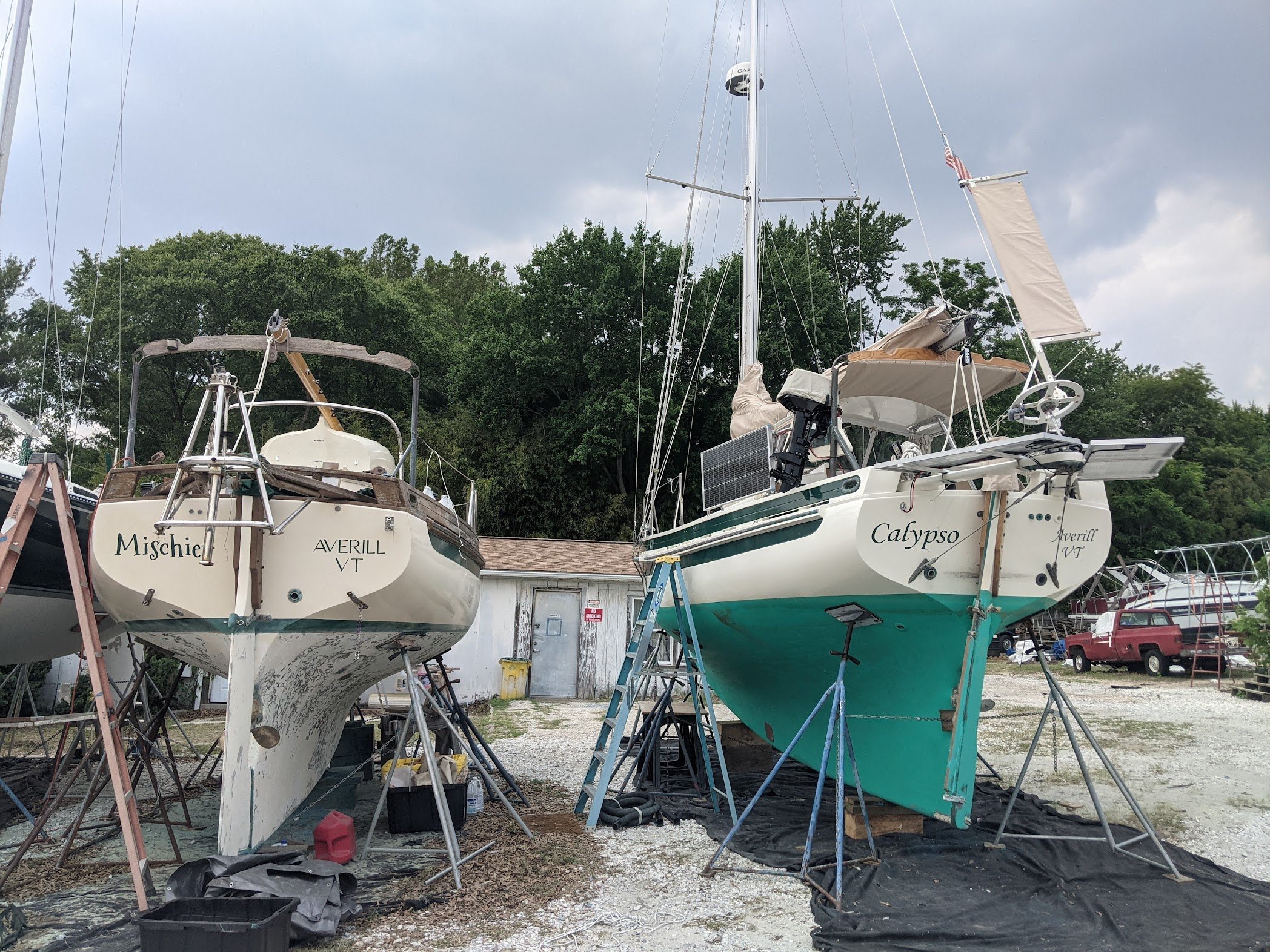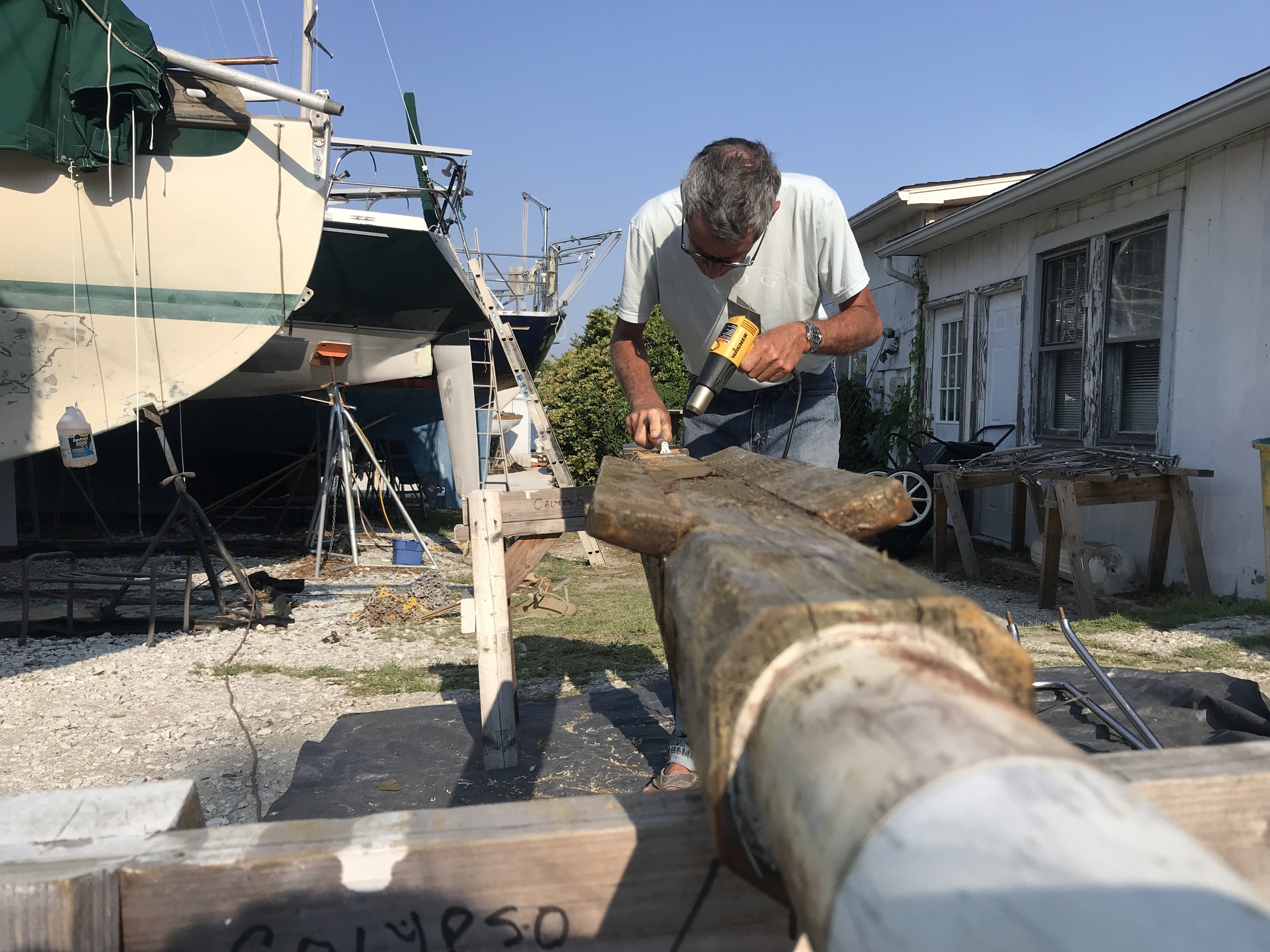Mischief - Let's Begin!
We joke that some people rescue pets; we rescue Bristol Channel Cutters. Not that we’re planning on making a habit of this, mind you, but the fact does remain that we’ve now bought 2 lovely old boats in serious need of work. At least when we bought Calypso, she was largely a blank canvas, with the interior mostly already gutted and the exterior wood newly redone.
Mischief, on the other hand, had languished for the 10 years before we bought her. She’d been tied up at a dock and largely abandoned, even though the people lived in the house overlooking the dock itself. They are very sweet, well-intentioned people who had a wrench thrown into their planned cruise to the Caribbean from which they never really recovered. The woman confessed to me that they’d always thought the boat was too good for them. I think it’s possible they got tired of being reminded of a personal failure each time they looked out their living room window.
So, Much. Mildew.
A little background. Calypso is hull #6, built by the Sam L Morse yard in 1976 when the yard was offering only hull and deck construction. Any interior finish needed to be undertaken by a 3rd party, whether the owner or someone else the owner hired. Mischief is hull #67, built in 1983 by the Sam L. Morse yard as a complete vessel. The difference between an owner-finished boat and a yard-finished boat is in the details, of course. Some owner-finished boats are high-level furniture-grade while others merely utilitarian. (Calypso probably falls somewhere in between.) Yard boats, though, are legendary for their finish, with details like bronze ventilation covers on settee lockers and perfectly-fitted Treadmaster on visible portions of the hull. The yard boats adhere to Lyle Hess’s interior design, too, with a pull out double berth to port and a truly ingenious hinged counter that joins the chart table and sink to create a luxurious amount of very usable counter space. Sam Morse specially sourced materials like v-notch fiberglass board to use on bulkheads and the underside of the deck, creating a smooth easily cleaned finish that shouldn’t need refinishing ever.
Some finish details visible.
There have been fewer than 150 of these boats ever built. The Sam L Morse yard went belly up in the early 2000s, a victim of the luxury boat tax debacle. The BCCs are a bit of a cult classic; full keel, lots of wood, tiny cockpit. A lot of people these days seem to want light-filled apartments on the water, to heck with that woodwork. Still, I’d hazard a guess that there aren’t a lot of those floating condos that have people circling back for a second look or calling out “Hey, nice boat!” (Maybe the 70 foot catamarans.) Rescuing one feels like taking care of a part of a time gone by.
They don’t make boats like this much anymore.
We first heard about the boat that would become Mischief one hot afternoon in Deltaville in June of 2021. Jeremy was installing some bronze bits for the homemade Freehand wind vane he’d been building with the help of our friend Dave Tabor, when another BCC-knowledgeable friend stopped by. “Hey, did you hear about the BCC that’s for sale just up the Piankatank? The broker’s a friend of mine and doesn’t know anything about these boats. I think they could ask a lot more but it sounds like it’s in really rough shape.”
This poor boat.
“Really rough shape” was a gross understatement. The lines, triple and quadrupled on the pilings and the dock, were thick with mold and so stiff we had to cut some off to even move the boat. Inside, the teak plywood around the portholes was delaminating from water intrusion. Varnish hung in strips from the insides of the hatches; sunlight was visible between the wood planks. The keel-stepped mast sat in a puddle of water and corroded aluminum in the bilge. Ants swarmed at the bitts while crabs munched the garden growing on the waterline.
But Jeremy could stand upright in the main cabin. The ceiling strips lining the hull were bright and warm. The tile-topped counter where a cabin heater could possibly nestle was unbroken. What’s a little cleaning and fixing to bring a classic back to life?
Standing up straight!
The story I wrote for Good Old Boat magazine about our love affair with these 2 boats won an honorable mention award at the Boating Writers International annual contest for 2022 - if you’re not a subscriber (what are you waiting for?), you can access the story at the link above.
We bought her 2 weeks after we first laid eyes on her, moved her to the boatyard from whence we’d just splashed Calypso, and in May of 2022 moved both boats to a yard south of Baltimore where at least for the next year or so we’ll be playing shuffle boat. The real work of renovating her has begun. We’re living on Calypso while working on Mischief, the boats hauled out so close to each other we can hand tools (or cold beers) from one boat to the other.
Ladder life. Want to know where we are? Look for shoes at the base of the ladder.
Engine and electrical, mast and rigging. Leak proofing as best as we can. Renovating exterior hatches and teak, dealing with the interior teak plywood. A serious deep clean or two or three. There’s a lot to do but the bones make it worth it. We’re headed to the Bahamas in October, weather permitting. Watch our progress here!
Starting work on the bowsprit, June 10.
Since we returned from Bee’s graduation in early June, we’ve (the royal we, to be clear - it’s mostly Jeremy doing the hard labor while I act as Gofer and keep him fed) removed the bowsprit, bitts, and rudder, cleaned 95% of the exterior teak, replaced the batteries and a large part of the electrical system, recommissioned the fresh water system. We’ve started removing the chainplates, washed lines and cushion covers, are in the process of refinishing the (rebuilt) hatches. Leak mitigation is at the very early stages. There’s a lot of cleaning going on. Some days it feels like a lot of progress while other days we despair of ever moving on.
We are hiring the yard to deal with the engine drive train and building new standing rigging; we’re also working to find a place to buy new chainplates. These are jobs that are either more specialized in terms of tools or skills, or just require some more oomph than we can supply. The rest, though, is squarely on our plate.
The first unwelcome surprise was when we discovered the rudder cheeks were rotten inside. What should have been a relatively quick refinish job turned into the need to build new ones.
Rotten rudder cheeks. This is not good.
A day to research, a day to source the wood and get it processed for building, another day to build. Three days later, the newly-sound rudder cheeks are ready to be finished.
Fitting the new rudder cheeks to drill proper fastener holes.
Despite all that’s still to be done, we feel pretty good about the prospects. Bring on a season in the Bahamas!
Bowsprit as of yesterday. 5 more coats to go!










